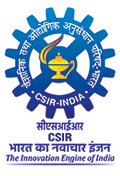Development of Quenched & Partitioned steel through Hot Strip Mill Route
Objectives
To develop the Q&P process through HSM route using Gleeble simulation for UTS of 1200MPa with 15% Elongation and minimum hardness of 450 BHN.
Technical Details
The present project envisages the retained austenite stabilization during hot rolled coil cooling (non-isothermal) after quenching to a temperature between Ms and Mf. The carbon partitioning from martensite to austenite will result in retained austenite between martensite laths, thus improved mechanical properties.
This will eliminate the need of isothermal heat treatment facility after hot strip mill. However, this process critically requires the design of suitable alloy composition and an optimum quenching/coiling temperature which decides the austenite phase fraction and partitioning kinetics.
In view of the above, present work was focused on designing of a suitable alloy composition. The hot rolled coil cooling obtained. simulations were performed on developed alloys from different quench temperatures and the resulting microstructure was then correlated with mechanical properties
Achievement (Output/outcome)
Low alloy steel which can stabilize austenite during non-isothermal partitioning process was developed and two Patents were filed jointly with TATA steel.
The developed alloys can achieve UTS in the range of 950-1550 MPa with 11-15 % elongation and 300-450 BHN hardness.
Impact
The alloys of the present invention contain low alloying additions and hence good weldability and easy to fabricate. The stabilization of retained austenite during hot rolled coil cooling simulation was demonstrated which negate isothermal partitioning or tempering treatment. The increased impact toughness and abrasive wear resistance of developed alloys will improve the service life of component used in locomotive and earthmoving industries.
 Fig1: Schematic of quenching and non-isothermal partitioning process
Fig1: Schematic of quenching and non-isothermal partitioning process
 Fig2: EBSD analysis (a) secondary electron image; (b) corresponding inverse pole figure (IPF) of austenite phase; (c) image quality (IQ) map of high magnification scan and (d) corresponding IPF of austenite phase (green and black colors represent austenite and martensite phases, respectively).
Fig2: EBSD analysis (a) secondary electron image; (b) corresponding inverse pole figure (IPF) of austenite phase; (c) image quality (IQ) map of high magnification scan and (d) corresponding IPF of austenite phase (green and black colors represent austenite and martensite phases, respectively).






